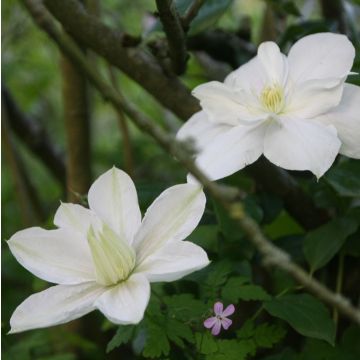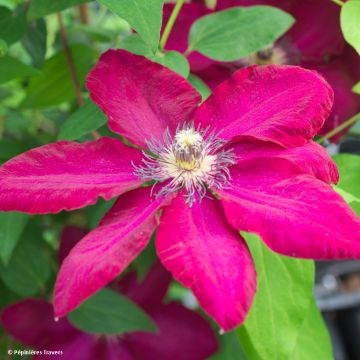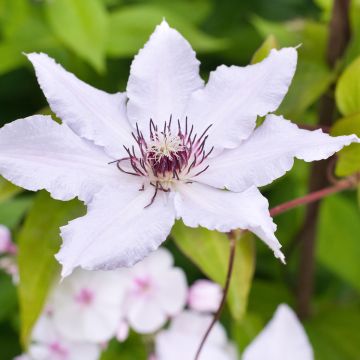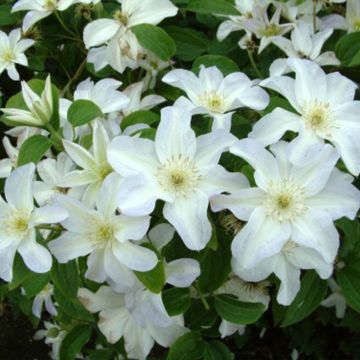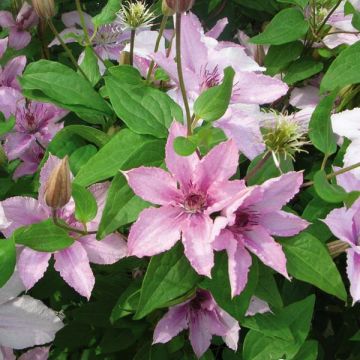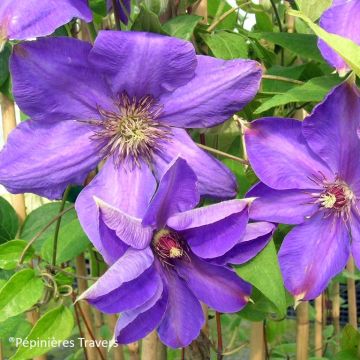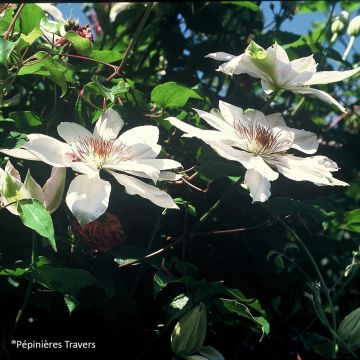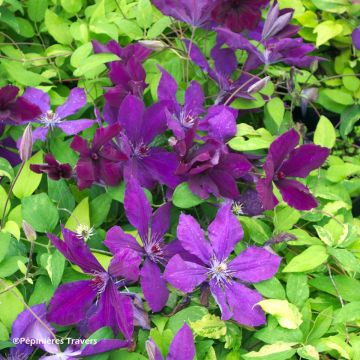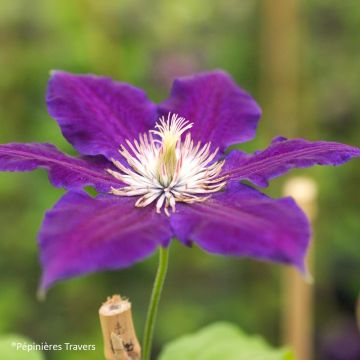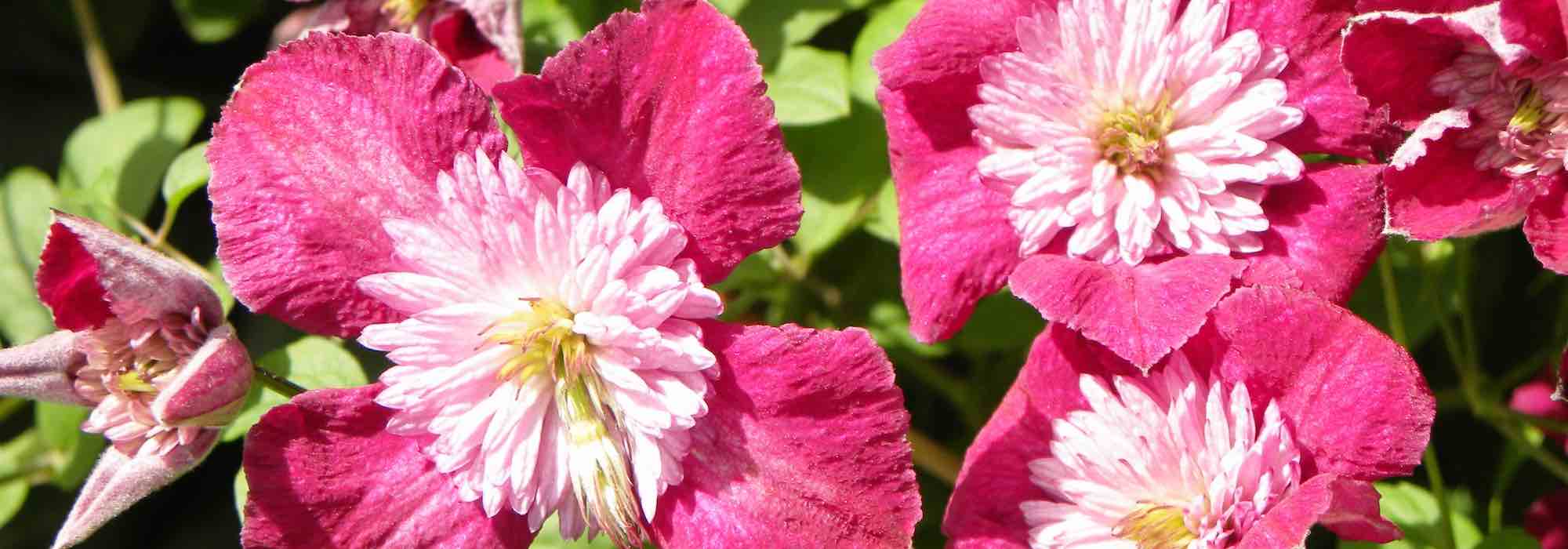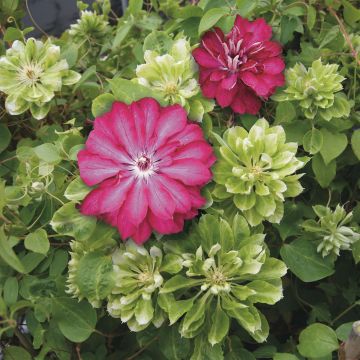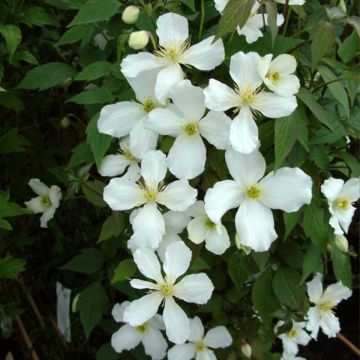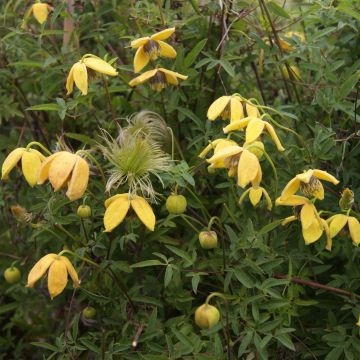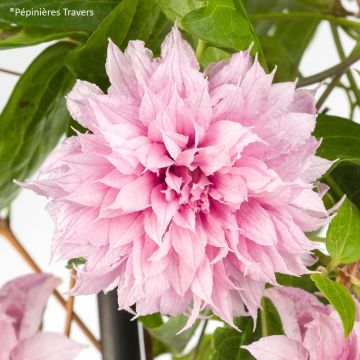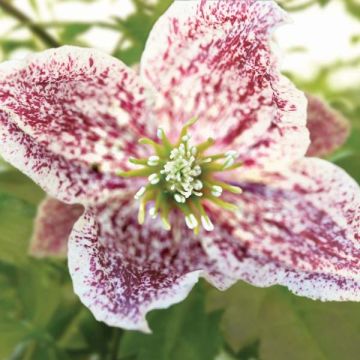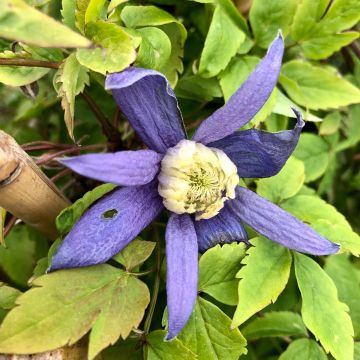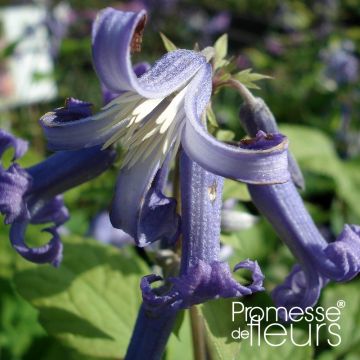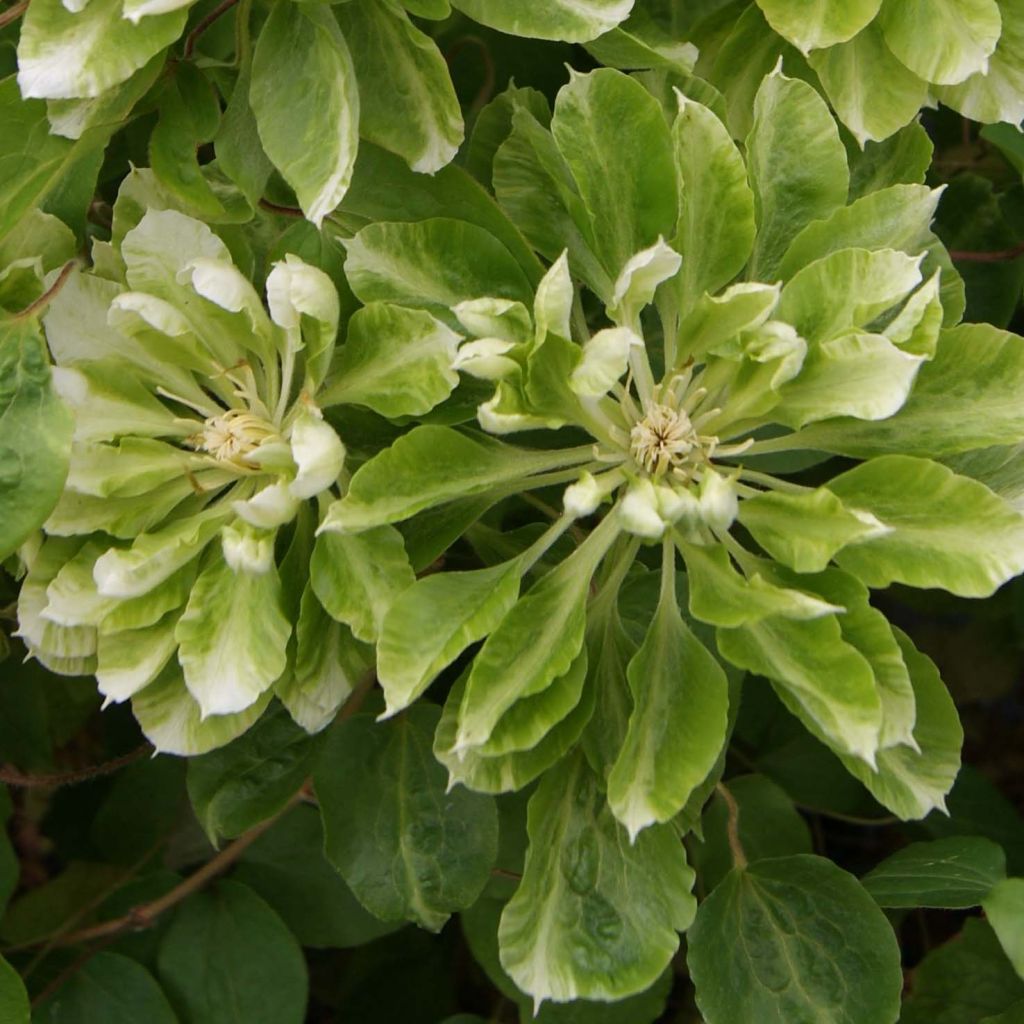

Clématite Green Passion - Clématite à grandes fleurs
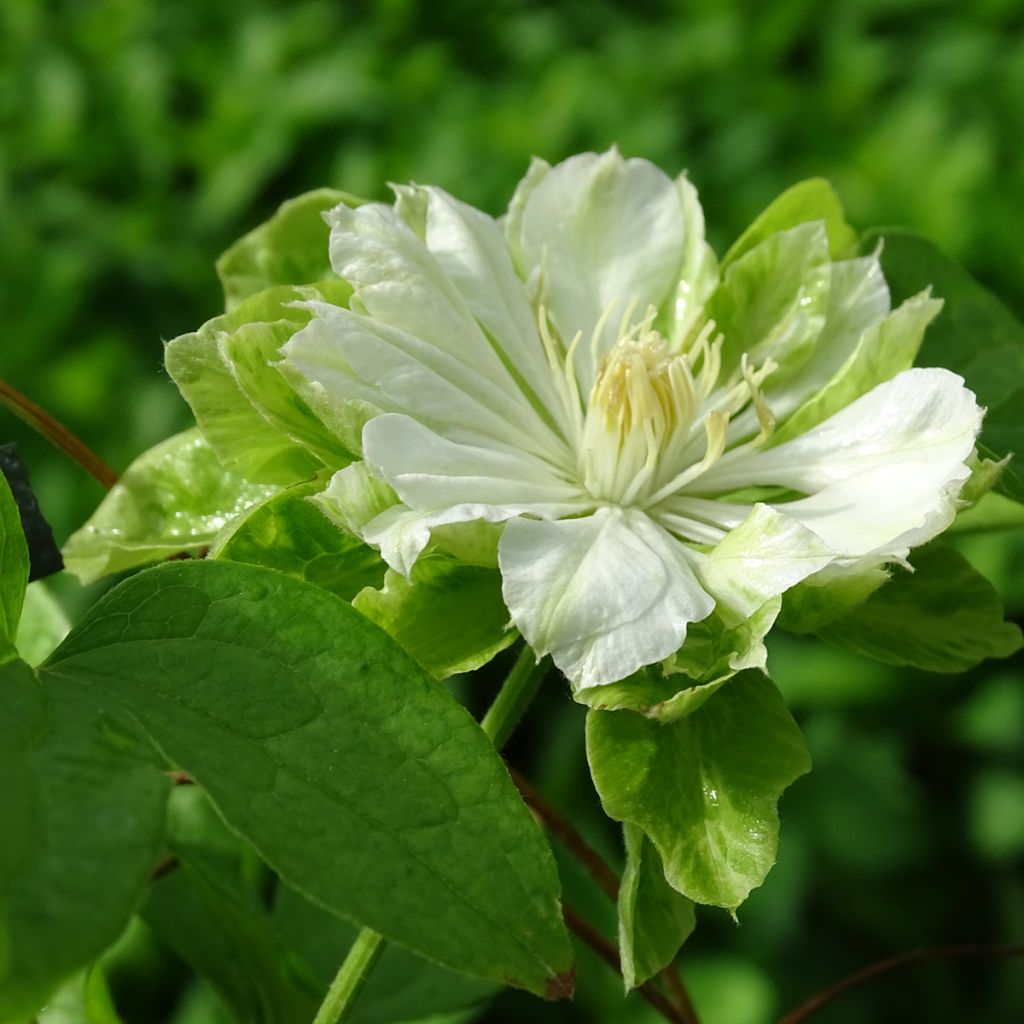

Clématite - Clematis Green Passion


Clématite Green Passion - Clématite à grandes fleurs
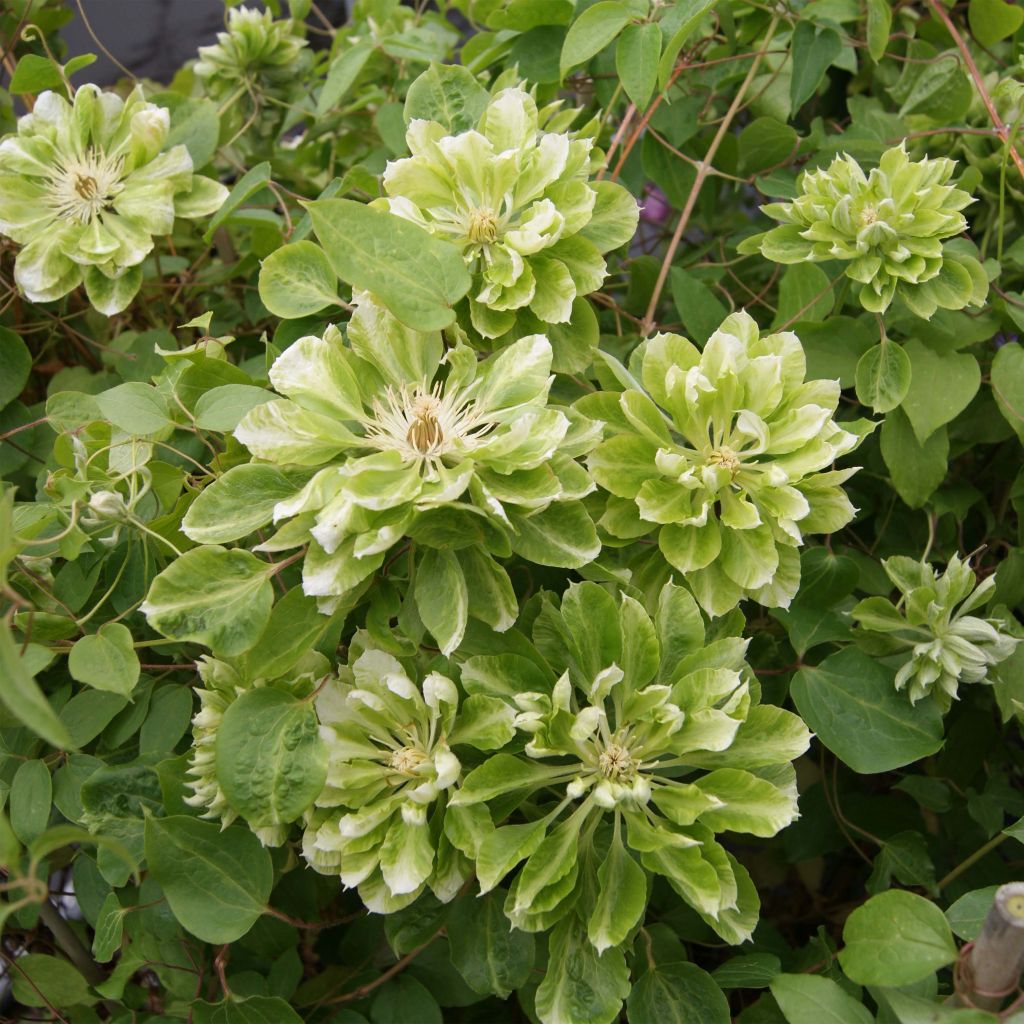

Clématite Green Passion - Clématite à grandes fleurs
View more pictures
Hide images
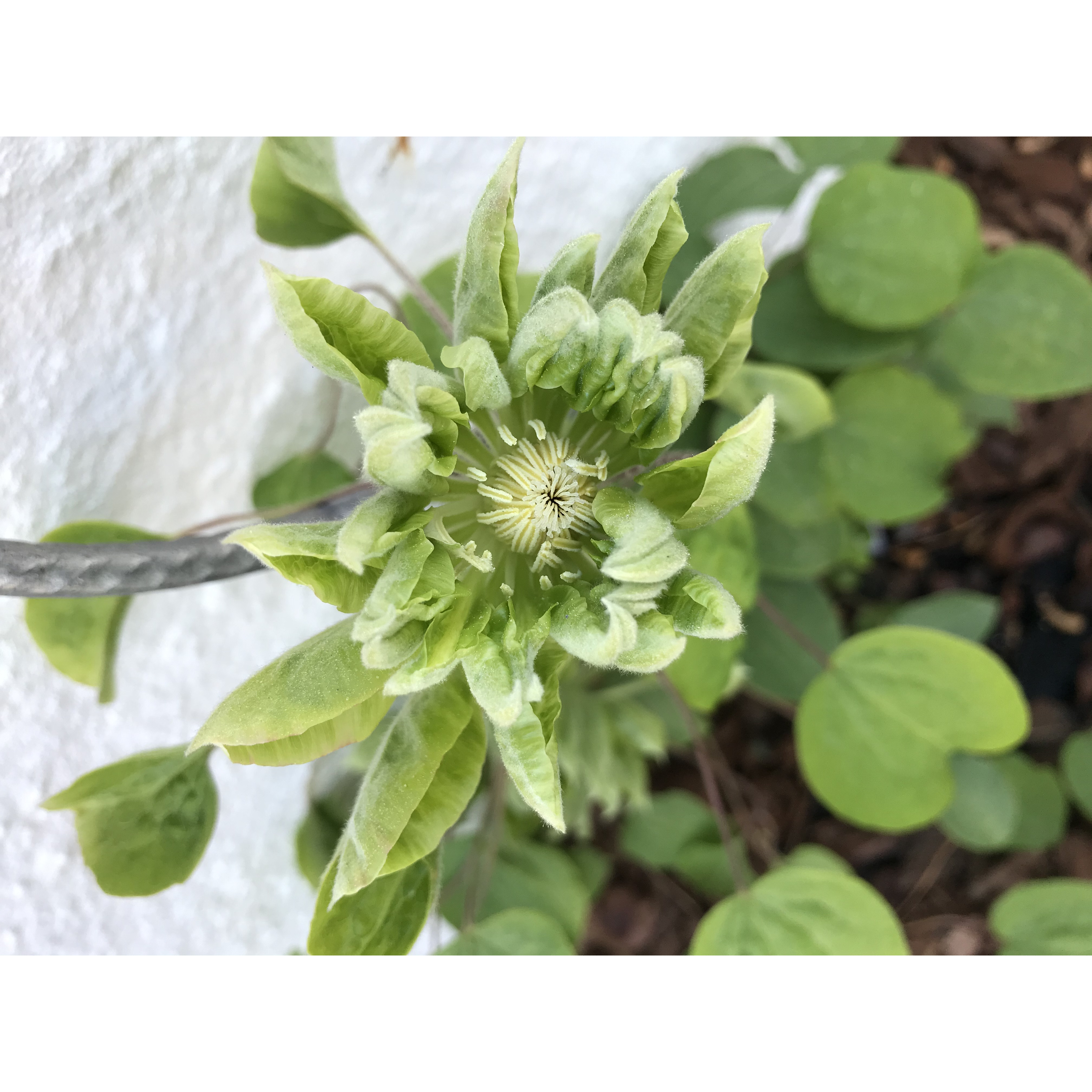
Emmanuelle F.

Emmanuelle F. • PT
Clematis x patens Green Passion
Clematis x patens Green Passion
Early Large-flowered Clematis
Planted under a tree peony, it may be a bit too shaded, but it still rewarded me with its large green flowers. Ideally, it should be placed near colourful foliage to enhance its beauty. The use of your "cardboard trellis" that protects shipments is also practical for keeping some freshness at the base of the plant once it's in the ground. Thank you.
MD, 19/11/2022
Special offer!
Receive a €20 voucher for any order over €90 (excluding delivery costs, credit notes, and plastic-free options)!
1- Add your favorite plants to your cart.
2- Once you have reached €90, confirm your order (you can even choose the delivery date!).
3- As soon as your order is shipped, you will receive an email containing your voucher code, valid for 3 months (90 days).
Your voucher is unique and can only be used once, for any order with a minimum value of €20, excluding delivery costs.
Can be combined with other current offers, non-divisible and non-refundable.
Home or relay delivery (depending on size and destination)
Schedule delivery date,
and select date in basket
This plant carries a 6 months recovery warranty
More information
We guarantee the quality of our plants for a full growing cycle, and will replace at our expense any plant that fails to recover under normal climatic and planting conditions.
Would this plant suit my garden?
Set up your Plantfit profile →
Description
The Clematis 'Green Passion' is a new variety of large green-flowered clematis that is quite original and will appeal to curious gardeners and trendy bouquet enthusiasts. This lovely climber, 2 to 3 meters (7 to 10 feet) tall, offers a quantity of extremely double, wide flowers in spring and again in late summer, resembling tightly packed bouquets of leaves, revealing an almost white fluffy underside. This amazing little vine will thrive in full sun or partial shade and can climb into a large bush or even a large pot on the terrace.
Clematis belongs to the ranunculaceae family. They are found in both hemispheres, particularly in Europe, the Himalayas, China, Australia, and North and Central America. The 'Green Passion' variety, bred in the Netherlands in 2007 and introduced in 2016, is a perfectly perennial and hardy, semi-woody climbing plant that will reach a height of 2 to 3 meters (7 to 10 feet), with a minimum spread of 1.25m (4ft). It belongs to the patens group of clematis.
This clematis bears very double flowers, 8 to 10cm (3 to 4in) in diameter, which appear on the previous year's wood in spring, from April to June, and then again on the current year's growth from late summer to autumn. The flowers are solitary or grouped in clusters and are particularly abundant. They are upright and have numerous tepals of tender green color with a silky underside that truly resemble leaves. The flowering is followed by decorative feathery silver-gray fruits that persist until winter. The deciduous leaves are divided into small rounded leaflets, glabrous, of medium green color. This clematis attaches itself to supports or host plants through petioles transformed into tendrils.
Plant your clematis alongside your climbing roses or climbing lianas to extend the flowering of your walls and pergolas until the end of summer. It is a genus rich in diversity, with varieties available in all colors, shapes, and sizes. Take advantage of their easy cultivation to give your garden a romantic and bohemian touch. 'Green Passion', which loves to climb into bushes, pairs well with the pink flowers of lilacs, deutzia, or Kolkwitzia amabilis Pink Cloud. It also performs well in a large pot. Create unique spring bouquets by picking a few branches loaded with flowers, mixed with pink or purple peonies, Angelique tulips, "red" or mauve or pink irises, and many other garden flowers.
Clematis x patens Green Passion in pictures
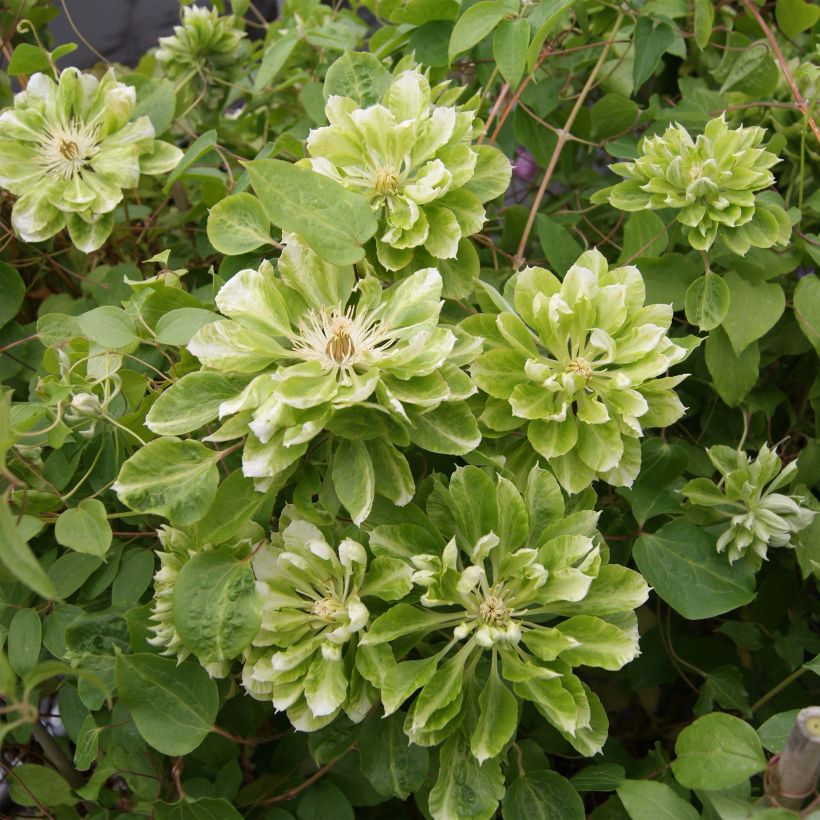

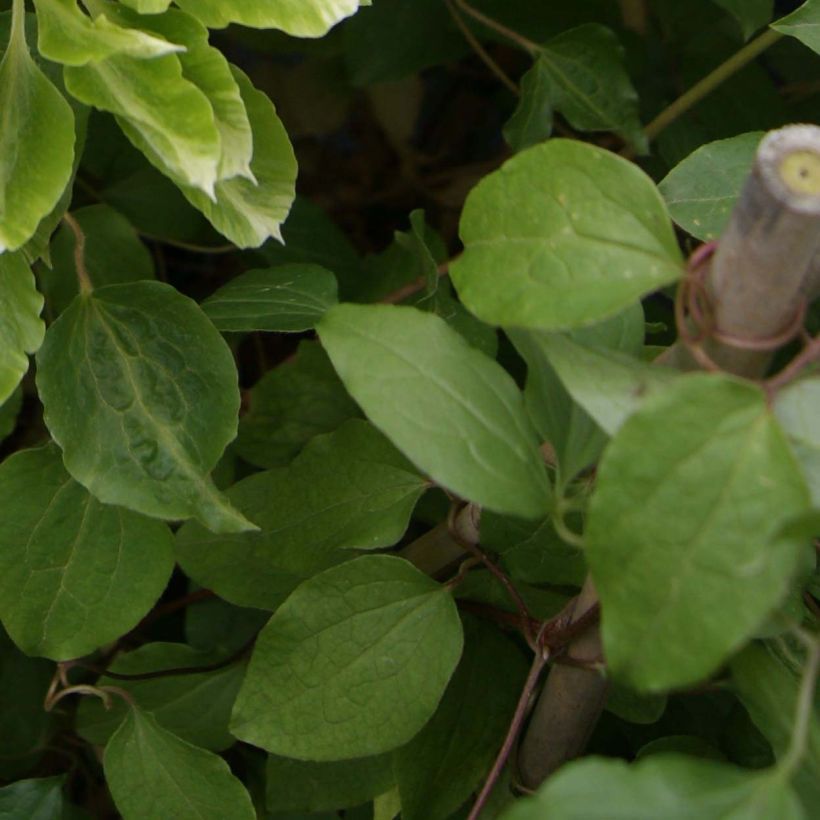

Plant habit
Flowering
Foliage
Botanical data
Clematis
x patens
Green Passion
Ranunculaceae
Early Large-flowered Clematis
Cultivar or hybrid
Other Clematis Patens
View all →Planting and care
The Clematis Green Passion will appreciate a sunny or lightly shaded position near a tree. Plant it in a fertile, humus-rich soil, especially well-drained, shading the roots and base of the stem (with a flat tile, for example). In general, the clematis wilts in overly wet soil and during hot weather, falling victim to a terrible disease commonly known as wilt. Plant it by covering the root ball with 3 cm (1in) of soil, in soil worked to a depth of 20 cm (8in), lightened with good compost and coarse sand. After planting, prune the clematis stems to about 30 cm (12in) above a nice pair of buds. During the first few weeks, water regularly. However, be careful not to let the water stagnate as this can lead to the development of a fungus at the neck. Mulch all clematis plants in February with garden compost or well-rotted manure, avoiding direct contact with the stems. Train the stems, without squeezing them, until the plant can cling to them itself. Clematis plants also like to grow freely on neighboring plants. Remove dead or weak stems in March, before the start of the growing season, and prune all others above 2 healthy buds. These will produce secondary stems that will bear lateral shoots flowering in May. Remove faded flowers. The young shoots will bloom later in the season.
After a few years, cover the base of your climbing clematis with a small mound of soil to reduce the risk of wilt while promoting the growth of vigorous shoots from the stump. Voles and grey worms can attack clematis plants and devour the stems. Aphids and greenhouse whiteflies are also potential parasites of clematis plants.
Planting period
Intended location
Care
Planting & care advice
-
, onOrder confirmed
Reply from on Promesse de fleurs
Similar products
Haven't found what you were looking for?
Hardiness is the lowest winter temperature a plant can endure without suffering serious damage or even dying. However, hardiness is affected by location (a sheltered area, such as a patio), protection (winter cover) and soil type (hardiness is improved by well-drained soil).

Photo Sharing Terms & Conditions
In order to encourage gardeners to interact and share their experiences, Promesse de fleurs offers various media enabling content to be uploaded onto its Site - in particular via the ‘Photo sharing’ module.
The User agrees to refrain from:
- Posting any content that is illegal, prejudicial, insulting, racist, inciteful to hatred, revisionist, contrary to public decency, that infringes on privacy or on the privacy rights of third parties, in particular the publicity rights of persons and goods, intellectual property rights, or the right to privacy.
- Submitting content on behalf of a third party;
- Impersonate the identity of a third party and/or publish any personal information about a third party;
In general, the User undertakes to refrain from any unethical behaviour.
All Content (in particular text, comments, files, images, photos, videos, creative works, etc.), which may be subject to property or intellectual property rights, image or other private rights, shall remain the property of the User, subject to the limited rights granted by the terms of the licence granted by Promesse de fleurs as stated below. Users are at liberty to publish or not to publish such Content on the Site, notably via the ‘Photo Sharing’ facility, and accept that this Content shall be made public and freely accessible, notably on the Internet.
Users further acknowledge, undertake to have ,and guarantee that they hold all necessary rights and permissions to publish such material on the Site, in particular with regard to the legislation in force pertaining to any privacy, property, intellectual property, image, or contractual rights, or rights of any other nature. By publishing such Content on the Site, Users acknowledge accepting full liability as publishers of the Content within the meaning of the law, and grant Promesse de fleurs, free of charge, an inclusive, worldwide licence for the said Content for the entire duration of its publication, including all reproduction, representation, up/downloading, displaying, performing, transmission, and storage rights.
Users also grant permission for their name to be linked to the Content and accept that this link may not always be made available.
By engaging in posting material, Users consent to their Content becoming automatically accessible on the Internet, in particular on other sites and/or blogs and/or web pages of the Promesse de fleurs site, including in particular social pages and the Promesse de fleurs catalogue.
Users may secure the removal of entrusted content free of charge by issuing a simple request via our contact form.
The flowering period indicated on our website applies to countries and regions located in USDA zone 8 (France, the United Kingdom, Ireland, the Netherlands, etc.)
It will vary according to where you live:
- In zones 9 to 10 (Italy, Spain, Greece, etc.), flowering will occur about 2 to 4 weeks earlier.
- In zones 6 to 7 (Germany, Poland, Slovenia, and lower mountainous regions), flowering will be delayed by 2 to 3 weeks.
- In zone 5 (Central Europe, Scandinavia), blooming will be delayed by 3 to 5 weeks.
In temperate climates, pruning of spring-flowering shrubs (forsythia, spireas, etc.) should be done just after flowering.
Pruning of summer-flowering shrubs (Indian Lilac, Perovskia, etc.) can be done in winter or spring.
In cold regions as well as with frost-sensitive plants, avoid pruning too early when severe frosts may still occur.
The planting period indicated on our website applies to countries and regions located in USDA zone 8 (France, United Kingdom, Ireland, Netherlands).
It will vary according to where you live:
- In Mediterranean zones (Marseille, Madrid, Milan, etc.), autumn and winter are the best planting periods.
- In continental zones (Strasbourg, Munich, Vienna, etc.), delay planting by 2 to 3 weeks in spring and bring it forward by 2 to 4 weeks in autumn.
- In mountainous regions (the Alps, Pyrenees, Carpathians, etc.), it is best to plant in late spring (May-June) or late summer (August-September).
The harvesting period indicated on our website applies to countries and regions in USDA zone 8 (France, England, Ireland, the Netherlands).
In colder areas (Scandinavia, Poland, Austria...) fruit and vegetable harvests are likely to be delayed by 3-4 weeks.
In warmer areas (Italy, Spain, Greece, etc.), harvesting will probably take place earlier, depending on weather conditions.
The sowing periods indicated on our website apply to countries and regions within USDA Zone 8 (France, UK, Ireland, Netherlands).
In colder areas (Scandinavia, Poland, Austria...), delay any outdoor sowing by 3-4 weeks, or sow under glass.
In warmer climes (Italy, Spain, Greece, etc.), bring outdoor sowing forward by a few weeks.































